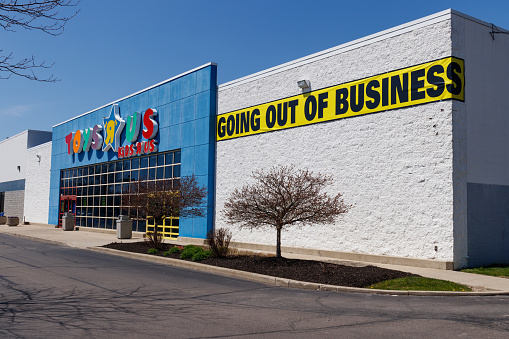Editor’s note: Juli Lennett is senior vice president, industry advisor for market research firm NPD Group’s U.S. toy division. This is an edited version of a post that originally appeared under the title, “The holiday landscape without Toys “R” Us."
 A lot has happened since the big announcement that Toys “R” Us would be liquidating its stores in the U.S. Based on some of the news reports in mid-March, when this was first announced, you might have predicted that the sky would have fallen by now and the toy industry would be a shell of itself.
A lot has happened since the big announcement that Toys “R” Us would be liquidating its stores in the U.S. Based on some of the news reports in mid-March, when this was first announced, you might have predicted that the sky would have fallen by now and the toy industry would be a shell of itself.
That didn’t happen. But why not?
As I wrote in my blog back in March, NPD found that when parents bought a toy last year at Toys ‟R” Us, over 70 percent of them were purchased for a specific occasion like a birthday or Christmas. In addition, 70 percent of toys purchased at Toys “R” Us were purchased because kids asked for the specific toy or brand. Even without Toys ‟R” Us, Christmas and birthdays aren’t going away and kids will continue to ask their parents and grandparents for their favorite toy and get it.
As we move into the most important time of the year when nearly 50 percent of all U.S. toy sales occur, the question is, what impact will the liquidation have on the U.S. toy industry’s holiday season? After all, parents bought a lot of toys during the 16 weeks of the liquidation and are hoarding them to give away at Christmas, right?
Well, yes, but to a small degree. 
In a recent study that NPD conducted in the U.S., 83 percent of consumers who bought a toy during the liquidation at Toys “R” Us reported that they already had or would give the toy away by the end of September. That leaves only 17 percent who reported that they would be giving the toy away some time in Q4. And, interestingly, the No. 1 occasion that the liquidation toys were purchased for was for a birthday. Christmas came in third place, behind “no special occasion.”
What does this mean to the toy industry in Q4? It’s pretty simple actually. Based on my estimates, pantry loading will have a negative impact of 1.4 percent on Q4 sales. In addition, we can expect to see about 20 percent of Toys “R” Us sales simply evaporate. This translates to an additional negative impact of about 2 percent. The total negative impact on Q4 should be about 3.4 percent if everything else remains status quo compared to last year.
But, that’s the big question mark. Is everything going to remain status quo compared to last year?
I think the Toys “R” Us news has re-energized the toy industry. Existing toy retailers are making bigger investments in toys, new toy retailers are emerging and manufacturers are looking for new avenues of distribution. Another likely outcome is that toy manufacturers will become more creative and we’ll see more interesting and unique products coming down the pike.
If there is one thing I feel confident about, it’s that the toy industry will be anything but status quo in Q4.
